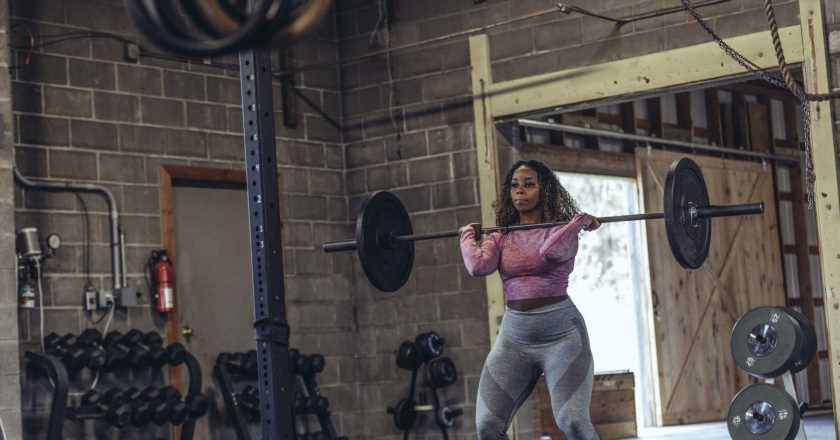Lots of us train to failure – squeezing in those extra few reps until we can barely move. But that may not be doing us the muscle building-good that we think it is.
When it comes to building muscle, there are a host of different techniques you could use. If you wanted to get seriously strong, you might go for power training – working on that one rep max and training in very short, very heavy bursts. More likely than not, a PT will have you working on hypertrophy to build more lean muscle mass, tweaking sessions via super, giant, pyramid and negative sets, or endurance with light weights and high rep volume.
But one common technique that experts seem to be turning their backs on – at least for amateur lifters – is training to failure (TtF). TtF involves doing reps of a certain exercise until your muscles are so tired, you can’t do another one. Sounds pretty harmless right? But think about it: when we work in hypertrophy for a shoulder press, for example, we’re lifting at 60-80% of our overall capacity for a maximum of 12 reps.
That may mean lifting two 10kg dumbbells for 10 reps, after which, you’d take up to a minute’s breather before going for two more rounds. If we were working with endurance instead, we might choose 5kg weights and go for 18 reps. With TtF, however, you’d lift 20kg overall for 12, 15, 18 reps… and eventually find that you fail halfway through the 20th rep.
You may also like
Supersets in strength training: how to pair exercises to build more muscle in less time
Training to failure is supposed to be stressful, and it’s that stress that is supposed to force our bodies to recruit more muscle fibres and produce hormones and chemical signals to promote muscle growth. But according to Alice Liveing, PT and founder of the Give Me Strength app, training to failure isn’t suitable “unless someone is very advanced or capable”. She tells Stylist: “For most people, training to failure isn’t safe or necessary.”
And that’s also the conclusion of a new review of the data by experts at Liverpool John Moores University and Ulster University: the research around TtF may not be as conclusive about its benefits as previously thought.
Writing in The Conversation, they point to a study which showed that muscle strength and power were significantly lower when performing squats and bench press to failure, with muscle damage being a lot higher over the next two days compared to regular training. “Both of these factors combined may actually reduce a person’s ability to develop muscle and strength when exercising,” they say.
The benefits of training to failure aren’t conclusive
Two other reviews from 2021 found that TtF had “no benefit whatsoever” when it comes to increasing muscle size, strength or power. Instead, they found that other factors like age, how regularly you exercise and the other kinds of training you do have far more profound effects.
The researchers also pointed to a study that disputed whether hormones released from TtF had any impact on muscle growth.
Clearly, TtF is an advanced technique with quite a large scope for injury (as you get tired, form gets sloppy) and more than a dose of doubt over its benefits – so is it something many women actually try to implement in their training?
Writer Victoria Stokes says that she does it “very occasionally… particularly during sessions where I feel like I’ve got a lot left in the tank.” It gives her a chance, she explains, to see how far she can push herself. Meanwhile, CrossFitter Alice Porter only works to failure when she’s actively testing her max reps (up to three) on movements that she only does every six-to-12 weeks. “I wouldn’t do it with more reps than this as it would probably lead to injury.”
That all sounds quite reasonable: if you want to test your progress, then training to failure is one way to do that. But, as relatively new strength training advocate Zuva Seven explains, working with such an extreme technique can have the reverse effect when it comes to motivation. “I did it once, as I’d heard that training to failure is the best way to maximise muscle growth, but I ended up too tired to stick with my routine.”
In other words, if you go that hard in one session, you might struggle to recover in time for your next weight date… which is how habits get broken. These days, Seven prefers to train “close” to failure. “If I’m in the middle of my sets and I can’t lift the weight at all and decreasing the weight is of no help, I call it a day on that exercise.”
Images: Getty
Looking to build muscle? Check out one of our training plans – which are packed with tried-and-tested strength-building techniques that are guaranteed to make you feel stronger today than you were yesterday.
Source: Read Full Article
